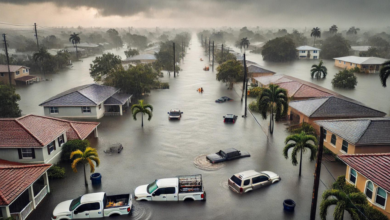“A Constantly Changing Market”: The Evolution of Cyber Insurance and the Opportunities Ahead

“A Constantly Changing Market”: The Evolution of Cyber Insurance and the Opportunities Ahead
Cyber
Written by Chris Davis
Cyber insurance has evolved significantly since its early days — and Megan North (pictured), executive vice president and branch president at Amwins, has been there for much of that journey.
“I was in cybersecurity before it was popular,” she told Insurance Business.
Over that period, Internet policies have shifted from basic Internet liability policies to comprehensive plans that include digital crimes and industry-specific improvements.
“When I first started, the market consisted of just a few forms,” says North. “Now, there are hundreds of forms, and they are updated every year, making it essential to stay immersed in this ever-changing field.”
It is this change that keeps North engaged in the field, where she enjoys continuous learning and the opportunity to add value through innovative solutions. One of the important areas of growth and opportunity in cyber insurance that she sees is the small and medium-sized enterprise sector.
“Any business connected to the internet faces cyber risks,” she explained. “New businesses are emerging every day, and there’s really no shortage of opportunities. Even the most conservative estimates agree that the vast majority of these entities don’t have cyber insurance. So the challenge in this space will be to reach them effectively with products that really meet their specific needs.”
cyber insurance saboteur
AI could also be a disruptor in cybersecurity. According to research by HiddenLayer, organizations are currently using 1,689 AI models, making AI security a top priority. What’s more, 94% of IT professionals say they will allocate funds to protect their AI in 2024.
“There are a lot of conversations about AI, but we’re still trying to figure out its full impact on both a professional and personal level,” North said.
While the integration of AI raises many challenges in data protection and privacy, it also poses a threat as cybercriminals use the new technology to accelerate attacks.
“We have more questions than answers right now, but it’s clear that AI will play a significant role in the future,” North added.
North describes the current environment as a soft market, with abundant energy and premiums stable or even declining.
“In a weak market, carriers are keen to provide more limits and capacity, sometimes offering solutions that did not exist before,” she explained.
This has made the market more accessible, even for those who previously considered cyber insurance too expensive. But it’s not all about price.
“It’s no longer about cheap; customers are looking for more. Successful carriers in this market partner with their customers, provide them with tools and advice to improve security, stay proactive about the latest threats, and provide customized solutions.”
Amwins is trying to grab market share by launching new products, such as Cyber Up, a comprehensive online product aimed at addressing risks in industries like transportation and logistics, which have traditionally faced challenges in claims for physical injury or property damage over the internet.
The Northern Region is also seeing increasing interest from traditional industries such as construction, manufacturing and agriculture. These sectors are increasingly aware of their vulnerability to cyber attacks due to their reliance on technology and internet connectivity.
“Even industries that didn’t consider themselves prime targets are now starting to explore cyber coverage,” she told IB.
However, North is generally optimistic about the growth potential of the sector, telling IB that there are estimates that predict “billions of dollars of growth in cyber insurance gross written premiums over the next few years.”
(Swiss Re forecasts for 2024 and 2025)
Despite the promising outlook, it also acknowledges the growing challenges faced by emerging producers and the complexities faced by producers.
“There is very little standardization when it comes to cyber coverage models, and not all carriers are comfortable providing the same level of coverage,” she said.
But unlike natural disasters, cyber events can be mitigated through timely interventions.
“The data we collect on claims loss trends and historical risk profiles is more than ever,” she noted. “We’ve also realized that cyber risk is a synthetic risk. It’s man-made. So, in theory, there should be some ways we can combat that. It’s not like hurricanes or weather-related events.”
Is there potential for brokerage firms to expand into this market? North certainly thinks so.
“The future of cyber insurance is bright, but it will require continuous adaptation to new challenges and opportunities,” she added.
Related Stories






Fetching comments…